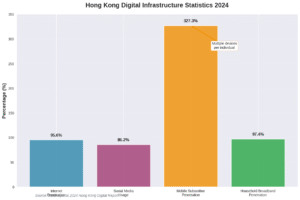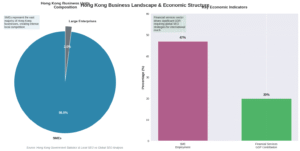Month: September 2025
The Growth Hacker’s New Secret Weapon: Prompt Engineering
Sep 30, 2025 | 3 Min Read

Growth hacking requires trying to achieve more with fewer resources- limited time, tight budgets, and limited resources. In an era characterized by minimal attention spans and rapid trends, quick initiation, testing, and iteration cycles have become invaluable for marketers. This agility is being enhanced by another phenomenon: prompt engineering.
Prompt engineering, or intelligent prompt crafting, is changing how companies conceptualize, test, and adapt growth strategies. Growth hackers can formulate effective marketing tests in minutes due, in part, to AI cutting out the need for tedious brainstorming with creative teams (Federiakin et al., 2024).
Prompt engineering is about more than inquiry. It also involves transforming a vague concept into a fully executable piece of advertisement writing, campaign blueprint, or growth loop. Effective AI prompt design allows marketers to transform raw ideas into fully developed marketing campaigns in under 4 hours (Chen et al., 2025).
The rapid growth of prompt engineering may be validated with data from the Grand View Research, where the prompt engineering market was valued at USD 222 million in 2023 and projected to reach about USD 2.06 billion, at a CAGR of about 32.8 %. Due to the quick adoption of large language models in marketing, customer service, and software development, it has facilitated growth. Companies are investing in specialized prompting processes for quicker time-to-acquisition and development to market and stronger customer engagement. The positive trend shown in the chart implies prompt engineering is moving from its niche experimental status to a fully mature, revenue-critical capability (Grandviewresearch.com, 2024).
Real-world use cases
It is already being used; below are some of the real-world scenarios (PromptLayer, 2025).
- Growth Loops: Prompts can be created to train the AI to create endless content or engagement bait to attract users to return.
- Referral Campaigns: Have the AI assist in designing reward levels, high-converting messages, and provide instructions to automate outreach to incentivize growth by word of mouth.
- Viral Content Prompts: Ask the AI to generate interesting memes, social captions, or headlines to share that are aligned to real-time trending conversations.
A Framework that Works: Idea → Prompt → Test → Refine
To incorporate prompt engineering into growth hacking, it’s helpful to think about this type of framework that emphasizes the cycle you will repeat:
- Idea – Determine the main goal for growth, such as increasing user acquisition or improving user retention.
- Prompt – Write prompt instructions that result in many campaign angles, messaging variations, or creative assets.
- Test – Use the best output to run small and fast experiments.
- Refine – Understanding the data, what worked, and updating your prompts for follow-up edits and improvement.
The cycle of Idea → Prompt → Test → Refine is what allows growth teams to be agile and intensely data-driven.
With constant monitoring of the outcomes and perfecting prompts, any interaction with your AI could become another growth hack you could consider. Just a single prompt is enough to turn into dozens of streamlined campaigns, messages, and experiments.
Instead of promoting as a one-time signal, growth hackers believe that this feedback loop can teach us to learn how to target the audience, to take creative angles, and so on. This implies that the prompts will eventually turn into a living asset over time, getting better with every test, uncovering the latent opportunities, and ensuring your marketing plan will be fast, market-responsive, and highly successful (Sahoo et al., 2024; Schulhoff et al., 2024).
For example, a new startup that launches a new app can make dozens of TikTok ad scripts within a second and refine it into the top three scripts and post all three ads the same day with a single well-written prompt.
Prompts as Growth Hacks on Demand
The greatest benefit of prompt engineering is that it is demand-scaled. Teams are able to turn on new growth hacks any time, rather than being inspired to work creatively. Good prompts have the potential to produce:
- Drip sequences of emails based on specific customer groups.
- SEO-focused ideas for blogs that would take advantage of high-intent keywords.
- Ad creatives: Multiple platform customization, multiple languages.
Growth hacks can be employed, with prompts when necessary, allowing growth hackers to be campaigning and experimenting all the time, without consuming a lot of money or exhausting teams.
The Road Ahead: From Early Adopters to Essential Skill
Social media marketing was once a niche feature of the marketing strategy of a brand and is now a mandatory busk, prompt engineering is also fast becoming a developmental skill set. It will not take long before any marketing team will require a specialist within its ranks who can do the work of an AI language interpreter or any copywriter to narrate a story (Zhang, Y. & Chen, L., 2025).
Companies that have embraced prompt engineering as a part of their marketing strategy are already seeing tangible and strategic advantages that give them a competitive edge:
- Faster time to market: Using AI to ideate, write copy, and even test campaigns is permitting teams to transform an idea into a launch in days rather than weeks. Such freedom allows businesses to hop onto trends when they are trending and develop a following before their rivals can get a clue of the trend.
- Lower cost per acquisition: Marketing teams can be able to save massive budgets by automating testing and creating creative iterations in large numbers. The marketers can do more with less money.
- Higher engagement rates: Potential and existing customers also interact better with the content when it is individually tailored and based on data. There is also some degree of immediacy in the tone of voice, timing, and message in prompt-driven campaigns, which facilitate a connection of importance in the moment and create more loyalty to the brand.
These benefits of prompt engineering are enabling organizations to not just be a tactic, but a true growth lens. Companies are now able to achieve more with less and be relentlessly ahead of the curve.
Conclusion
Prompt engineering isn’t a future concept; it is the next big growth lever for companies of all sizes. For growth hackers, the equation is simple:
Idea → Prompt → Test → Refine = Superfast, repeatable growth.
You can include prompt engineering in your growth strategy today to change AI from an assistant that helps you into a high-velocity innovation engine. The growth hacks of tomorrow will begin from a prompt you write today.
References:
- Chen, X., Li, Y., & Zhang, H. (2025). Unleashing the potential of prompt engineering for large language models. Patterns, 6(5), 100982.
- Federiakin, D., Khalid, M., & Saito, T. (2024). Prompt engineering as a new 21st-century skill. Frontiers in Education, 9, 1366434.
- Grandviewresearch.com (2024) Prompt Engineering Market (2024 – 2030).
- PromptLayer (2025) State of AI engineering survey: Key insights from the AI engineer world fair.
- Sahoo, S., Dey, L., & Patel, P. (2024). A systematic survey of prompt engineering in large language models. Artificial Intelligence Review. Advance online publication.
- Schulhoff, S., Liu, S., & Goldstein, T. (2024). The prompt report: A systematic survey of prompting techniques. arXiv preprint arXiv:2406.06608.
- Zhang, Y., & Chen, L. (2025). Prompt engineering research: A comprehensive survey. Journal of AI Research and Applications, 12(1), 45–78.
Why AI Won’t Replace Marketers — But Marketers Who Use AI Will Replace Those Who Don’t
Sep 23, 2025 | 3 Min Read

AI often sparks an uneasy question among marketers: “Will this technology replace me?” The fear is understandable. Headlines about automation wiping out jobs can feel alarmist. But the reality is more nuanced — and far more empowering.
AI is not here to replace marketers. Instead, it is reshaping what great marketing looks like. Those who adapt will thrive, while those who ignore the technology risk being left behind.
Tackling the “Fear of Replacement” Narrative
Marketing jobs are evolving, not disappearing. The World Economic Forum predicts that AI and automation will displace 83 million jobs globally by 2027 but also create 69 million new ones, many in areas like AI-enhanced marketing, content design, and data analysis.
Generative AI has democratized capabilities. McKinsey reports that marketing & sales are the top functions already using GenAI, showing its role as an enhancer of work rather than just a cost-cutting tool.
The lesson? AI may automate rote tasks, but it elevates the strategic, creative, and empathetic parts of marketing that only humans can deliver.
AI as Copilot, Not Replacement
Think of AI as the copilot sitting beside you:
It handles the heavy lifting — analyzing patterns, summarizing thousands of reviews, or drafting first-round content.
You, the marketer, steer the plane — setting brand tone, judging emotional resonance, and imagining campaigns AI could never dream up.
Deloitte calls this the “fusion skillset”: human creativity augmented by machine efficiency. Their 2023 research found that companies deploying AI-human collaboration saw 20–30% higher productivity compared to automation-only approaches.
Human Creativity + AI Efficiency = Success
Here are three clear examples where human marketers plus AI deliver results neither could achieve alone:
1. Content Personalization at Scale
- AI can segment an audience into micro-clusters.
- A human marketer crafts emotionally resonant messaging tailored to each group.
- Result: McKinsey shows that personalization leaders achieve 40% more revenues from those activities.
2. Creative Ideation
- AI generates dozens of possible campaign slogans in seconds.
- Human marketers choose and refine the winners, weaving them into a broader narrative.
3. Competitive Analysis
- AI tools summarize competitor campaigns, ad spend, and content performance.
- Humans interpret why the messaging worked, then design a differentiated strategy.
These workflows show AI doesn’t kill jobs — it upgrades them.
Future-Proof Yourself as a Marketer
The marketers at risk are not those who learn AI, but those who ignore it. AI won’t replace you. But the marketer who knows how to wield these tools will replace the one who doesn’t.
That’s why I teach the AI Agents for Marketing course at HKU SPACE — to future-proof your skills, turn you into an AI-native professional, and help you thrive in this new era.
References
1.World Economic Forum. Future of Jobs Report 2023.
2.McKinsey & Company. The State of AI in 2023.
4.McKinsey & Company. The Value of Getting Personalization Right. 2021.
Local SEO vs. Global SEO: Hong Kong’s Unique Challenges
Sep 9, 2025 | 3 Min Read

Hong Kong businesses face unique challenges when choosing between local and global SEO. Local SEO is vital for small shops and services targeting nearby customers, requiring optimization in both English and Traditional Chinese, plus strong reviews and map visibility in a compact, competitive city. Global SEO matters for finance, tech, and e-commerce brands seeking international reach, demanding multilingual content, cultural adaptation, and technical setups like hreflang. Striking the right balance is key—brands must embrace Hong Kong’s bilingual market, engage local trust signals, and still prepare for cross-border visibility to stand out both locally and worldwide.
I.Introduction
Search engine optimization has evolved from a technical afterthought to a fundamental driver of business visibility and revenue generation. In an era where 99% of people have used the internet to look up information about a local business and 4 out of 5 users conduct searches with local intent, understanding the distinction between local and global SEO becomes crucial for sustainable growth.
The importance of this distinction is amplified in Hong Kong, where businesses must navigate a complex digital ecosystem that serves both hyperlocal consumers and international markets. According to DataReportal’s 2024 Hong Kong Digital Report, Hong Kong boasts an internet penetration rate of 95.6%, with 86.2% of the population active on social media platforms. This exceptional digital connectivity creates both opportunities and challenges for businesses seeking to establish their online presence.
Hong Kong’s unique position as a global financial hub with strong local characteristics presents a distinctive case study in SEO strategy. The territory serves as home to 78 of the top 100 banks in the world and maintains financial services representing over 20% of its $369-billion GDP. This combination of local market density and global significance requires businesses to carefully balance their SEO approaches to maximize both regional dominance and international reach.
II.Defining Local SEO vs. Global SEO
Local SEO: Targeting Geographic Specificity
Local SEO focuses on optimizing online presence to attract customers within specific geographic boundaries. This strategy prioritizes proximity, local relevance, and community-based trust signals to achieve visibility in location-based searches.
Key tactics for local SEO include:
Google Business Profile Optimization: According to BrightLocal’s research, 32% of SEO professionals believe that Google Business Profile is the most essential factor for ranking well in the local map pack
Localized Keywords: Targeting search terms that include geographic modifiers and local intent signals
Customer Reviews Management: With 90% of marketers believing that reviews directly impact local pack rankings
Local Citations and NAP Consistency: Ensuring consistent Name, Address, and Phone number across directories, as businesses with consistent NAP data are 40% more likely to appear in the local pack
Local Link Building: Acquiring backlinks from geographically relevant and authoritative local sources
Global SEO: Achieving International Reach
Global SEO encompasses strategies designed to reach audiences across multiple countries and regions, requiring a more complex approach to language, culture, and technical implementation.
Key tactics for global SEO include:
Multilingual Content Strategy: Creating content that resonates with diverse linguistic and cultural audiences
International Keyword Research: Understanding how search behavior varies across different markets and languages
Hreflang Implementation: Using HTML tags to signal to search engines which language and regional versions of pages to serve to specific audiences
Technical SEO Architecture: Implementing appropriate URL structures (ccTLDs, subdomains, or subdirectories) to organize international content
Cultural Adaptation: Ensuring content aligns with local customs, preferences, and regulatory requirements
The distinction between these approaches becomes particularly relevant when examining research from Manchester Metropolitan University, which found that local SEO recovery tends to be more difficult compared to overall major algorithm updates, due to the historical SEO practices attributed to many small business websites.
III. Hong Kong’s Unique Digital Landscape
Exceptional Digital Infrastructure
Hong Kong’s digital infrastructure represents one of the most advanced in the world. The territory maintains a 97.4% household broadband penetration rate and boasts mobile subscriber penetration of 327.3%, indicating multiple device ownership per individual. This exceptional connectivity creates a highly competitive digital environment where businesses must optimize for multiple touchpoints and platforms.
The mobile-first nature of Hong Kong’s digital consumption is particularly significant, with 30% of all mobile searches being location-related and 88% of consumers who conduct local searches on smartphones visiting or calling stores within 24 hours.
Multilingual Complexity
Hong Kong’s linguistic diversity presents unprecedented challenges for SEO practitioners. The territory operates with three primary languages:
Cantonese: The dominant spoken language, used by approximately 96% of the population
English: The business and legal language, with 53.1% of Hong Kong residents being proficient
Mandarin: Growing in importance, with 48.6% of residents being proficient
This trilingual environment requires businesses to make strategic decisions about language targeting, with research indicating that employers view multilingual capabilities as essential for business success in Hong Kong’s competitive market.
Dense Market Competition
Hong Kong’s compact geography creates an intensely competitive business environment. With Small and Medium Enterprises (SMEs) accounting for 98% of total business units and 47% of total employment, businesses face significant challenges in establishing digital differentiation.
The territory’s 1,104 square kilometers house over 7.49 million residents, creating one of the world’s highest business density ratios. This concentration means that local SEO competition is exceptionally fierce, with businesses competing not just against direct competitors but also against international brands targeting the Hong Kong market.
Platform Preferences and Digital Behavior
Hong Kong users demonstrate distinct platform preferences that impact SEO strategy:
Google Dominance: 88% of people use Google Maps to find local businesses, compared to only 12% using Apple Maps
Social Media Integration: With 86.6% social media usage and users spending an average of 1.7 hours daily across platforms
Mobile-Centric Behavior: 84% of local searches conducted on mobile devices, emphasizing the importance of mobile optimization
IV.Challenges of Local SEO in Hong Kong
Language Barriers and Multilingual Optimization
The necessity to optimize for multiple languages simultaneously creates complex technical and strategic challenges. According to Digitas Hong Kong, businesses must “think about multilingual SEO” and create content in both English and Cantonese to reach their complete audience.
This multilingual requirement extends beyond simple translation. Search behavior patterns differ significantly between languages, with Cantonese speakers often using different query structures compared to English or Mandarin speakers. The challenge is compounded by the need to understand cultural nuances that affect keyword selection and content creation.
Research from academic studies on multilingual SEO indicates that effective multilingual optimization requires understanding the linguistic behavior of users across different languages, as search patterns and preferred terminology can vary dramatically.
Intense Local Competition
Hong Kong’s concentrated market creates unprecedented competitive pressure. With businesses competing within a limited geographic area, achieving local SEO differentiation becomes increasingly challenging. The territory’s high business density means that:
Keyword Competition: Popular local search terms face intense bidding competition
Review Dominance: Businesses must maintain exceptional review scores, as 89% of consumers are more likely to choose businesses that respond to all reviews
Local Pack Visibility: With only three positions available in Google’s local pack, achieving visibility requires exceptional optimization
Local Trust Factors and Social Proof
Hong Kong consumers demonstrate particularly high expectations for local business credibility. Research indicates that 62% of consumers will avoid a local business if they find incorrect information online, making accuracy and consistency critical success factors.
The importance of review management is amplified in Hong Kong’s competitive environment. Businesses must not only generate positive reviews but also demonstrate active engagement with customer feedback. Studies show that 75% of consumers always or often check online reviews when researching local businesses, making reputation management a critical component of local SEO success.
Geographic Density vs. Demographic Diversity
Despite its compact size, Hong Kong encompasses remarkable demographic diversity. The territory serves multiple distinct communities, each with different search behaviors, language preferences, and cultural expectations. This diversity requires businesses to:
Segment Local Audiences: Develop distinct approaches for different demographic groups
Cultural Sensitivity: Ensure content resonates across cultural boundaries while maintaining local relevance
Micro-Location Targeting: Optimize for specific districts or neighborhoods within Hong Kong
V.Challenges of Global SEO from Hong Kong
Cross-border Competition Intensity
Hong Kong businesses pursuing global SEO face competition from both Mainland Chinese companies and established international brands. This creates a three-way competitive dynamic that requires sophisticated positioning and differentiation strategies.
The challenge is exemplified by Airwallex’s international SEO approach, where the FinTech company had to establish distinct regional content strategies across multiple markets while maintaining consistent brand positioning. Their approach included creating country-specific subfolders, with specialized content for Australia, the United States, the United Kingdom, and Hong Kong markets.
Cultural Adaptation Complexity
Global SEO from Hong Kong requires deep understanding of target market cultures, regulations, and business practices. This extends beyond language translation to encompass:
Regulatory Compliance: Understanding data privacy laws, financial regulations, and business requirements across jurisdictions
Cultural Preferences: Adapting content to align with local customs and expectations
Business Practices: Modifying approaches to match local business etiquette and decision-making processes
Technical SEO Implementation Challenges
Implementing global SEO presents significant technical challenges, particularly in:
Hreflang Implementation: Research from Seer Interactive indicates that proper hreflang implementation is critical for international success, yet remains one of the most challenging aspects of global SEO. Hong Kong businesses must ensure proper language and region targeting across their international presence.
Domain Strategy Decisions: Choosing between country-code top-level domains (ccTLDs), subdomains, and subdirectories significantly impacts SEO performance. Search Engine Journal research suggests that each approach has distinct advantages and limitations that must be carefully considered.
Site Architecture Complexity: Managing multilingual, multi-regional websites requires sophisticated technical infrastructure to ensure proper crawling, indexing, and user experience across different markets.
Regulatory and Compliance Considerations
Global expansion requires navigation of complex regulatory environments. Hong Kong businesses must ensure compliance with:
Data Privacy Regulations: Including GDPR in Europe, various state privacy laws in the United States, and emerging privacy regulations across Asia-Pacific markets
Financial Services Regulations: Particularly relevant for Hong Kong’s significant FinTech sector
Content Restrictions: Understanding content limitations and cultural sensitivities across target markets
VI.Strategies to Balance Local and Global SEO
Integrated Keyword Research Strategy
Successful Hong Kong businesses develop comprehensive keyword strategies that address both local and international audiences. This involves:
Local Keyword Optimization: Targeting Cantonese, English, and Mandarin search terms with Hong Kong-specific modifiers and intent signals.
Global Keyword Expansion: Identifying high-value international keywords while understanding regional search behavior variations.
Cross-Language Keyword Mapping: Developing content strategies that address the same topics across multiple languages while avoiding duplicate content penalties.
Google Business Profile Excellence
Optimizing Google Business Profile becomes critical for Hong Kong businesses targeting local audiences. Key strategies include:
Complete Profile Information: Ensuring all business details are accurate and comprehensive, as businesses with complete profiles are 50% more likely to be considered for purchases
Multilingual Descriptions: Creating business descriptions that serve both local and international audiences
Regular Content Updates: Maintaining active profiles with fresh content, photos, and customer interactions
Multilingual Content Architecture
Developing content that serves both local and global audiences requires sophisticated planning:
Content Localization: Moving beyond translation to create culturally relevant content for each target market.
Schema Markup Implementation: Using structured data to help search engines understand content context across languages and regions.
Internal Linking Strategy: Creating logical content relationships that support both local and international SEO objectives.
Strategic Partnership and Link Building
Hong Kong businesses benefit from developing both local and international link building strategies:
Local Partnerships: Collaborating with Hong Kong-based organizations, industry associations, and complementary businesses to build local authority.
International Outreach: Developing relationships with global industry publications, international business directories, and relevant international organizations.
Cross-Border Collaboration: Partnering with businesses in target international markets to develop mutually beneficial link exchanges and content collaborations.
Analytics and Performance Differentiation
Successful businesses implement analytics strategies that clearly differentiate between local and international performance:
Segmented Reporting: Creating distinct analytics views for local Hong Kong traffic versus international visitors.
Conversion Tracking: Understanding how local versus international visitors behave differently and optimizing accordingly.
Market-Specific KPIs: Developing performance indicators that reflect the unique characteristics of each target market.
VIII. Conclusion
The distinction between local and global SEO approaches represents far more than a strategic choice—it defines how businesses connect with their audiences in an increasingly connected yet locally relevant digital landscape. For Hong Kong businesses, this decision carries particular weight given the territory’s unique position as a global financial hub with distinct local characteristics.
Businesses operating in Hong Kong stand at a unique crossroads where local expertise and global ambition intersect. Success requires not just understanding the technical distinctions between local and global SEO, but embracing the cultural intelligence, technical sophistication, and strategic patience necessary to excel in both domains. Those who master this balance will find themselves uniquely positioned to capture the opportunities that emerge from Hong Kong’s distinctive role in the global digital economy.
The future belongs to Hong Kong businesses that can think locally while acting globally, creating digital presences that honor local community relationships while embracing the limitless possibilities of international expansion. In this dynamic environment, SEO becomes not just a marketing tactic, but a fundamental capability that enables businesses to build bridges between local relevance and global impact.
If you’d like to explore sustainable SEO solutions tailored to your business, feel free to reach out to us here.
References
- BrightLocal. (2024). Google’s Local Algorithm and Local Ranking Factors.
- DataReportal. (2024). Digital 2024: Hong Kong — Global Digital Insights.
- Digitas Hong Kong. (2025). Successful SEO Campaign in 2025: Your Guide to SEO.
- Foundation Inc. (2024). Airwallex Rides International SEO Strategy to $5.5B Valuation.
- Keegan, B., & Taylor, J. (2019). Are you local? The challenges of local search engine optimisation strategies. The Journal of Digital and Social Media Marketing, 7(3), 270-280.
- Search Engine Journal. (2018). The Best Practices of Optimizing for International SEO.
- SeoProfy. (2025). 76 Local SEO Statistics for 2025.
- Seer Interactive. (2023). International SEO Hreflang Guide.
- The Visual Realm. (2025). Local SEO: How Reviews Drive Rankings in 2025.
- WhiteSpark. (2023). Local Search Ranking Factors Survey.









